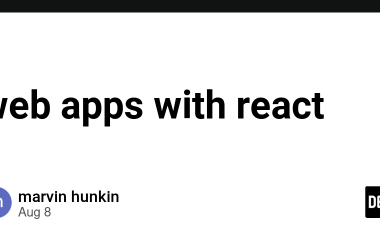In the ever-evolving landscape of web development, React has emerged as a powerhouse, offering developers a robust and efficient way to build user interfaces. Its component-based architecture and declarative syntax have made it a popular choice for creating interactive and responsive web applications. But as the demands of modern web development continue to grow, so does the need for tools that facilitate rapid software development. In this blog post, we’ll explore how React, when coupled with new tools and best practices, can help developers accelerate their software development process.
1. React – The Foundation
React, an open-source JavaScript library developed by Facebook, provides a solid foundation for building user interfaces. Its core principles, including a virtual DOM for efficient rendering and a unidirectional data flow, make it an ideal choice for large-scale applications. By breaking down the user interface into reusable components, React promotes modularity and maintainability.
However, to truly harness the power of React for rapid software development, developers need to pair it with a set of complementary tools and practices. Let’s take a look at some of these new tools and best practices.
2. Create React App
Creating a new React project from scratch can be time-consuming. “Create React App” (CRA) is a tool that automates this process, enabling developers to set up a new React project with just a few simple commands. CRA comes with a pre-configured build system, development server, and a set of sensible defaults, making it easier to get started quickly. This eliminates the need for complex build configurations and saves valuable development time.
3. State Management with Redux or Mobx
State management is a crucial aspect of any React application, and for larger applications, a more robust solution is often required. Redux and Mobx are popular state management libraries that help you manage complex application states efficiently. They provide a predictable and centralized way to handle application data, simplifying the development process and making it easier to maintain a consistent user experience.
4. TypeScript
TypeScript, a statically typed superset of JavaScript, has gained popularity as a tool for improving code quality and developer productivity. By adding type annotations to your React code, TypeScript helps catch errors at compile-time rather than runtime. This leads to more robust and maintainable code, reducing the time spent on debugging and enhancing overall development speed.
5. Component Libraries
In rapid software development, reusability is key. Leveraging component libraries like Material-UI, Ant Design, or Chakra UI can significantly expedite the UI development process. These libraries offer a range of pre-designed, customizable components that can be easily integrated into your application, reducing the need to build everything from scratch.
6. Testing with Jest and Testing Library
Automated testing is essential for ensuring the reliability of your codebase. Jest, in combination with the Testing Library (e.g., React Testing Library), simplifies the process of writing and running tests for your React components. With these tools, you can catch regressions early, maintain code quality, and iterate more rapidly without fear of breaking existing functionality.
7. Continuous Integration and Deployment
To achieve rapid software development, you need an efficient deployment pipeline. Continuous Integration (CI) and Continuous Deployment (CD) tools like Travis CI, CircleCI, and GitHub Actions automate the testing and deployment process. These tools allow developers to quickly push changes to production with confidence, knowing that the code has passed all the necessary tests.
Conclusion
React has undoubtedly revolutionized the way web applications are built, and it remains a cornerstone of modern web development. When combined with the right tools and best practices, React empowers developers to create high-quality applications rapidly. From state management to automated testing and deployment pipelines, the ecosystem around React continues to evolve, making it easier than ever to build scalable and maintainable applications.
If you’re looking to accelerate your software development process, consider adopting the tools and practices discussed in this blog post. By doing so, you’ll be better equipped to meet the demands of today’s fast-paced web development world and deliver exceptional user experiences.





